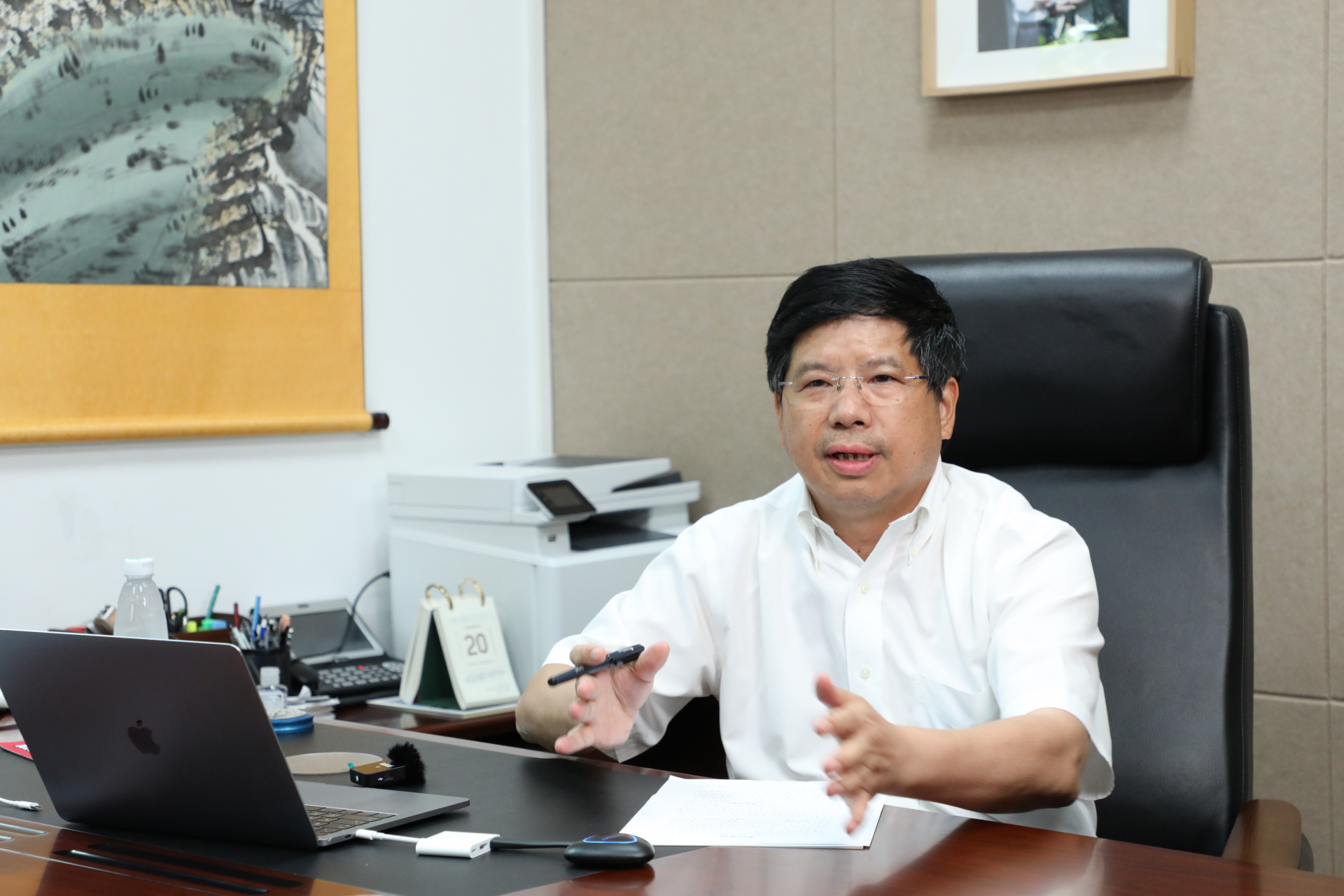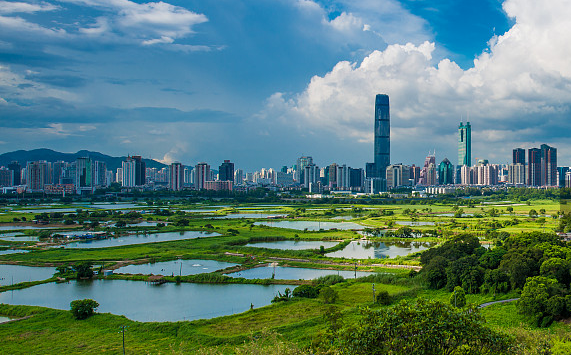Southern University of Science and Technology (SUSTech) is developing multiple next-generation technology research laboratories. These key laboratories can provide breakthrough technology transfers across and for the benefit of the region and the world. This story talks about a state key laboratory that focuses on the control of both surface water and groundwater pollution.
Water, or to be precise, clean water is the essence of life. Groundwater is a vital source of drinking water, and its pollution poses a significant threat to life on earth. As surface water and groundwater move through each basin, it is necessary to integrate surface and groundwater treatment to ensure the safety of society.
The world’s looming water crisis urges us to find new ways to improve water treatment for surface water and groundwater pollution control. The Chinese government has been paying more attention to improve the water environment as well. In 2015, the State Council issued the ‘Water Pollution Prevention and Control Action Plan’ (also known as the “Water Ten Plan”). The Water Ten Plan covers the whole process of source control, process interruption, and end treatment.
The Chinese government and scientists have done much in preventing and controlling surface water pollution in the early stage of water pollution prevention and control.
For the past five years at SUSTech, a group of leading global scientists in groundwater and environmental research has successfully developed an integrated method to tackle the challenge of integrated surface water and groundwater treatment. It is vital to study surface water, groundwater, and soil together to control the effects of water pollution.
Two years ago, in April 2018, a State Environmental Protection Key Laboratory of Integrated Surface Water-Groundwater Pollution Control (the Laboratory) was set up. It relies on the School of Environmental Science and Engineering (ESE) at SUSTech. It serves as a national research platform for cutting edge environmental science research, and cultivating future talents in the field of environmental science and engineering.

Laboratory Director and ESE Chair Professor Chunmiao ZHENG shared the outcomes of the Laboratory and their work to manage our precious water resources through improved water treatment. He pointed out that SUSTech and ESE had worked closely together throughout the two-year preparation period.
The Laboratory is the only ministerial-level key laboratory in China that focuses on how to integrate the water treatment for surface water, soil, and groundwater pollution. It is carrying out advanced fundamental theoretical research and applied technology development.

With advanced technological support, it offers significant facilities, equipment, and lab apparatus for every scholar to conduct cutting-edge research. Facilities like X-Ray photoelectron spectroscopes, isotope ratio mass spectrometers and laser scanning confocal microscopes are shared by scholars studying with the Laboratory.
The three primary research foci for the Laboratory are the mutual pollution mechanism of surface water and groundwater in the river basin, its ecological environment effect, and its regulation mechanism; pollution prevention technology, advanced equipment and materials; and pollution risk assessment, health assessment, and optimization control technology. These research directions complement each other and are indispensable.
Chunmiao ZHENG said, “As researchers, we should follow the laws of things and study the theories. We need to conduct scientific research on the migration and remediation mechanisms of pollutants in water. At the same time, new technologies, equipment, and materials for remediating or preventing water pollution should be our research focus.”
“As scientists and environmentalists, we should also evaluate the water quality in the environment while assisting government departments in formulating their guidelines. It is also our duty as environmental researchers to determine the objectives and measures of pollution prevention and control.”
In developing the talent team for the Laboratory, Chunmiao ZHENG highlighted the need for experts with different backgrounds. The simultaneous study on surface water and groundwater is both complex and multidisciplinary. The Laboratory has received significant support from all over the country and SUSTech to gather world-class talents to form its Academic Committee.
The Academic Committee is chaired by the Chinese Research Academy of Environmental Sciences (CRAES) Deputy Chief Engineer Fengchang WU, with 20 top industrial experts sitting on the Academic Committee. Eleven members, including Chairman Fengchang WU, are academicians of the Chinese Academy of Engineering (CAE) or the Chinese Academy of Sciences (CAS).
The Academic Committee has provided meaningful feedback in preparing the Laboratory, which has supported its research directions and talent team building. It represents further support for the development of the Laboratory.
Not only is the Academic Committee stacked with talent, but the research team is full of high-level multidisciplinary scholars. Throughout the preparation period, 51 full-time researchers have been employed. They include a CAS academician, a Fellow of the National Academy of Engineering (NAE), a Fellow of the Royal Academy of Engineering, and a Fellow of the American Geophysical Union (AGU).

Through the global efforts of the Laboratory, researchers have published more than 150 papers in high-impact academic journals such as Nature Communications, Environmental Science & Technology, and Water Research to date. They have applied for more than 50 patents and had six of them authorized. They have also applied for copyright on seven pieces of software and had seven copyrights authorized.
”Entrepreneurship” is one of the three pillars of SUSTech. Technological innovation and application is a crucial solution for improving the treatment for the prevention and control of surface water and groundwater pollution across China.
The Laboratory and ESE have made significant achievements in the past few years and has set its goal to become a national leader and world-class talent training base for environmental science and engineering.
Chunmiao ZHENG said, “We were lucky to be able to apply for the support for the environmental protection program. With the strong support of Shenzhen and SUSTech, the Laboratory has established an innovative environmental protection technology and technology company, SUSTech Environmental Ltd.”
In February 2018, Shenzhen was in the first batch of cities selected as national innovation demonstration zones for sustainable development. Each demonstration zone was established around the United Nations 2030 Agenda for Sustainable Development, along with China’s national implementation plans. The Laboratory is consistent with the developmental drivers of Shenzhen and the Greater Bay Area.
It has received strong support from the Shenzhen municipal government. It has also applied for and been approved for many national, provincial, and municipal research projects. It has undertaken more than 50 projects at all levels. They include major projects of the National Natural Science Foundation of China (NSFC) and the Guangdong Science and Technology Department.
The Laboratory is working towards becoming a national leader and world-class talent training base. It will provide strong scientific and technological support to the thorough prevention and control of surface water and groundwater pollution across China.
“In the future, I hope that the Laboratory can become a nationally renowned platform that generates more results and helps solve environmental problems in China and across the world.” Chunmiao ZHENG concluded.
Proofread ByYingying XIA
Photo BySchool of Environmental Science and Engineering